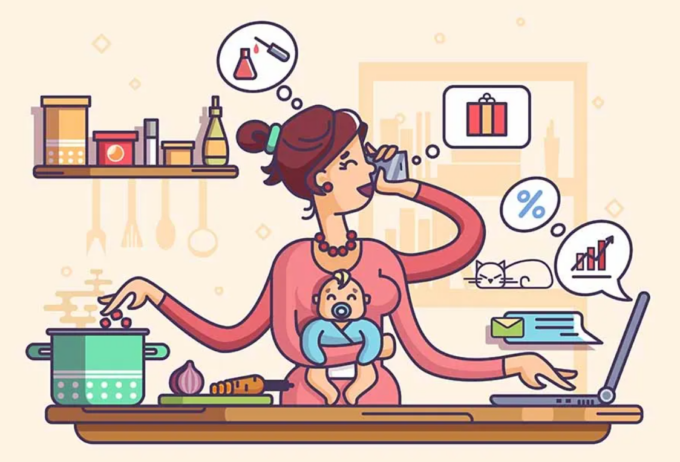
Making the metaverse a safe space for everyone
As organizations begin to incorporate the metaverse into their strategies, CEOs must ensure that the new technology supports equity, inclusion and diversity at every opportunity....
22 September 2023 in The Female Quotient
How healthcare firms are advancing the interlinked issues of gender parity, health equity, and the financial status of women....

Women account for 90% of frontline health workers and 70% of the overall global health workforce, providing essential health services to an estimated 5bn people worldwide, as Mary Stutts, CEO at Healthcare Businesswomen’s Association, whose mission it is to advance women and their impact in the workforce, points out.
And yet, several factors are inhibiting women’s progress in the field, from a pandemic-induced mass exodus of women from the healthcare labor force to a broken pipeline for women leaders, who hold just 25% of senior leadership roles. There will be major repercussions on the health ecosystem if we don’t solve this workforce crisis.
“Societal expectations towards gender haven’t kept up with how we are [operating] today,” says Takako Ohyabu, Chief Global Corporate Affairs & Sustainability Officer at Takeda Pharmaceutical Company.
“We need the right policies and incentives to achieve gender parity. In Japan, we see more working mothers in the workforce but societal expectations towards mothers haven’t changed: we are expected to do everything without help. In India, you need you mother-in-law behind you to juggle work and life,” she explained.
“In Japan, if policy makers were to open up more visas to helpers, and if the government could advocate that it was ok for women to ask for help, it would make a huge difference.”
A plethora of initiatives are underway to advance gender parity and healthy equity at Johnson & Johnson, Pfizer, Takeda Pharmaceutical Company, Merck (known as MSD in India), and Syneos Health. These can be applied and developed across industries to serve the advancement of women.
“At Johnson & Johnson, a number of initiatives allow us to give women the skills they need to continue to advance throughout their careers,” says Kristen Von Seggern, Vice President, Strategic Programs, Supply Chain & Operations, at the firm. One of these is the Women in STEM²D program: science, technology, engineering, math, manufacturing, and design. It focusses not only on professional women but on youths and university students, looking for ways to help females, young girls, young adults and women already working to choose STEM²D careers and stay in them.
However, it’s not all about degree education. Meenakshi Nevatia, Country President & Managing Director at Pfizer India, explains how her firm tackles parity at the grassroots level, believing that “disbalance” starts at home. “We go into villages near a big manufacturing facility in India to identify local students who have not just the degrees needed to move forward but also the skills,” she says. “We bring them to city, enroll them in colleges, and give them accommodation and a shift of work. We bring along their parents too.”

Significant efforts are being made to bypass the “paper-ceiling issue”, or the need to have a degree to get a family-sustaining job. It’s as much an issue for women as it is for people of color, says Mary Stutts.
One former CEO of Merck started an initiative asking CEOs of major Fortune 500 companies to sign a pledge to evaluate their job descriptions to question whether they really required a college degree. As a result, job descriptions were rewritten, removing requirements for degrees and adding skills instead.
As part of this so-called “recertification process”, 25% of the jobs at IBM were found not to require a college degree.
Apprenticeship programs, too, can target women dropping out of school because they need the money to work. The issue is that more men are getting certified and getting the better paying jobs. To close the skills gap, we need to get women certified and guarantee them jobs for afterwards.
The Female Quotient has the leverage needed to make companies commit to a pilot in which firms would sign up to giving women entry-level jobs and training them up. “It would be a game changer,” says CEO Shelley Zalis.
Nevatia refers to a company where the CEO calls new fathers asking them why haven’t taken their paternal leave. “It’s about the message we are sending as well as what we are doing for women. We have a paternal leave policy, but we have to walk the talk and take it to the next level. We must also drive home the message that paternal leave is expected, not just offered.” And the terminology matters too: let’s call it “parental leave”, removing any gender bias.
Bhawana Awasthy, GM, India, and Vice President Medical & Scientific Management at Syneos Health, describes an initiative at her company where, for the first time in history, five generations of women are operating in the workforce. “Our women’s employee resource group is one of the most active among the eight we run. We are talking about creating a policy on menopause. Given we have women of all ages and men [working with us], apart from talking about pregnancy and younger-age problems, menopause is one we need to all know about.”
Ohyabu suggests implementing a “diverse slate” to achieve gender parity at the executive level. She said that her own company’s commitment to the policy – which makes it mandatory to look at qualified female and male candidates whenever there is an opening at the senior executive level – has led to seismic change.

“Nine years ago, there were zero female executive committee members in our firm,” she recalled. “Last year, the women who can feed into senior executive level was 40%. Within a year, we increased it by 5%.”
Financial status is the number one indicator of health equity, and global health programs nodding to this fact abound. Johnson & Johnson’s global public health organization focusses on maternal health (pregnancies, post-natal care). “It’s a very large program focused in areas of need such as sub-Saharan Africa, to give opportunities to women unable to access healthcare as readily as many of us,” explains Von Seggern.
Ohyabu pinpoints the issue of burnout in women, leading her firm to make mental well-being a topic that people can talk about, offering solutions such as the Calm app. “If we could have that conversation more broadly it would help,” she says. There is work still to be done around helping women know about existing employee assistance programs supporting mental health treatment aside from insurance policies.
Most start-up companies focusing on health equity (such as digital firms and new platforms to advance health equity) are being started by women. And yet, women only receive about 3% of investment dollars; women of color receive less than 1%. A terrific opportunity therefore awaits funders to advance gender parity through backing these individuals.
As Ohyabu says, “Every time they make an investment decision, fund managers need to ask whether they could also mentor or sponsor a female- or minority-started start-up. That gives the access needed to these groups.”
At Johnson & Johnson, a certain percentage of investment must come from suppliers that are female-owned businesses. This helps drive the support of such businesses, meaning that setting metrics on female-owned business is also a much-needed piece of the gender and health equity jigsaw puzzle.
This article is based on a panel discussion from The Female Quotient’s (FQ) Equality Lounge sessions at the G20 Summit in New Delhi. IMD is an academic partner of The Female Quotient, which joins forces with companies and leaders to curate experiences, thought leadership, and solutions designed to achieve gender equality in the workplace and beyond.

Chief Executive Officer, Healthcare Businesswomen's Association

Vice President, Strategic Programs, Supply Chain & Operations, Johnson & Johnson

Country President & Managing Director, Pfizer India

Chief Global Corporate Affairs & Sustainability Officer, Takeda Pharmaceutical Company

Managing Director, MSD India

GM, India, and Vice President Medical & Scientific Management, Syneos Health

3 November 2023 • by Alyson Meister in Diversity, Equity, and Inclusion
As organizations begin to incorporate the metaverse into their strategies, CEOs must ensure that the new technology supports equity, inclusion and diversity at every opportunity....

27 October 2023 • by Ginka Toegel in Diversity, Equity, and Inclusion
It’s time to debunk outdated myths around women lacking confidence and not asking for pay rises and focus on the real problem: societal misperceptions. ...

9 October 2023 • by Natalia Olynec, Lars Häggström in Diversity, Equity, and Inclusion
With a growing number of employees holding their organizations to account over sustainability commitments, the onus is on HR departments to explain a firm’s purpose and impact if they are to attract...

9 October 2023 • by Martina Fuchs in Diversity, Equity, and Inclusion
Executives must do more to change the balance of power in the workplace, says BLM co-founder...
Explore first person business intelligence from top minds curated for a global executive audience